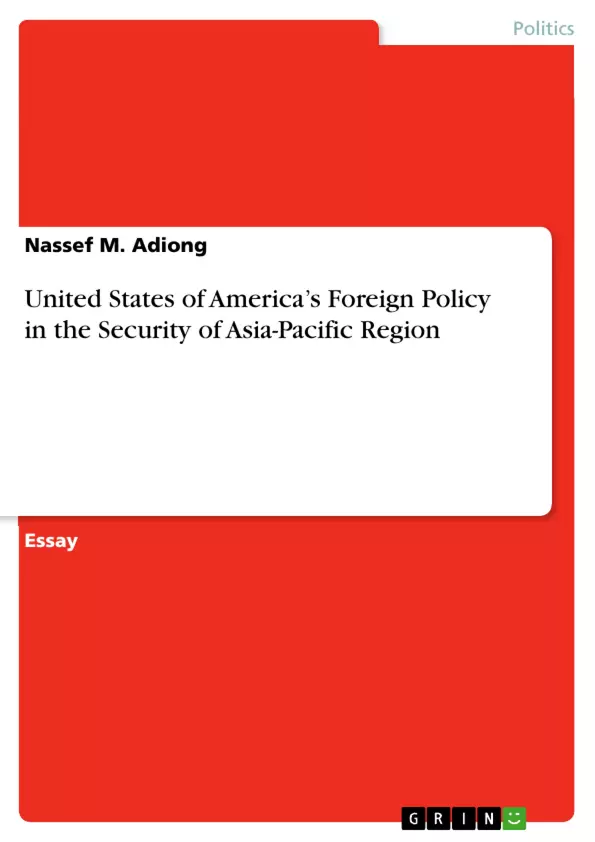This paper will examine the determining factors through the questions posited in the course outline regarding a gradual change of focus of U.S. foreign policy from terrorism to citing fomenting predictions and future tenses that China would be a ‘threat’ in the Asia-Pacific region as well to the world. Utilizing ‘Hedging,’ one of foreign policy’s options, as the tool or instrument to achieve its purpose, carry-out goals, and implement policies.
In 2000, Pres. George W. Bush labeled China as the United States’ leading strategic and military competitor. (Twining 2007) In his rhetoric, what changes in U.S. strategic and defense relationships in the Asia-Pacific region, if any, are needed to respond to major developments in the region, particularly China’s emergence as a major power, the continuing potential for inter-state conflict, and the struggle against militant Islamists? (Vaughn 2007)
Inhaltsverzeichnis (Table of Contents)
- Introduction
- American Interests and Foreign Policy
- U.S. Foreign Policy and Security Cooperation
- Characterizing U.S. Foreign Policy
- Security Considerations in U.S. Foreign Policy
- Challenges to Security and Peaceful Development
- U.S. Concerns and Reasons to Hedge Against China
Zielsetzung und Themenschwerpunkte (Objectives and Key Themes)
This paper examines the factors influencing a shift in U.S. foreign policy from terrorism to a focus on China as a potential "threat" in the Asia-Pacific region. It explores the use of "hedging" as a foreign policy strategy to achieve its objectives and implement policies.
- Shift in U.S. foreign policy focus from terrorism to China
- The role of "hedging" in U.S. foreign policy
- China's rising power and its implications for regional security
- The interplay of U.S. domestic, regional, and global interests
- Challenges to security and peaceful development in the Asia-Pacific region
Zusammenfassung der Kapitel (Chapter Summaries)
The paper begins by introducing the topic of U.S. foreign policy in the Asia-Pacific region, highlighting China's emergence as a major power and the potential for inter-state conflict. It discusses the underlying principles and objectives of U.S. foreign policy, emphasizing the promotion of American interests and the creation of a more secure, democratic, and prosperous world.
The paper then delves into the nature of U.S. foreign policy, exploring different perspectives on its role in the global arena. It considers the U.S. as a potential balancer, a neocolonial power, and a benevolent hegemon. It examines the relationship between security considerations and U.S. foreign policy, highlighting the shift in traditional international alliances in the post-9/11 era.
The paper further discusses challenges to security and peaceful development in the Asia-Pacific region, including unresolved wars, the rise of major powers, communal violence, and transnational concerns like weapons proliferation and terrorism.
Finally, the paper focuses on U.S. concerns and reasons for hedging against China. It examines China's military expansion, its growing nuclear capabilities, its support for illiberal regimes, and its potential to undermine U.S. interests in the region.
Schlüsselwörter (Keywords)
The paper focuses on key concepts such as U.S. foreign policy, Asia-Pacific security, China's rise, hedging, American interests, military power, regional cooperation, and challenges to security and peaceful development.
- Quote paper
- Nassef M. Adiong (Author), 2008, United States of America’s Foreign Policy in the Security of Asia-Pacific Region, Munich, GRIN Verlag, https://www.grin.com/document/139270



